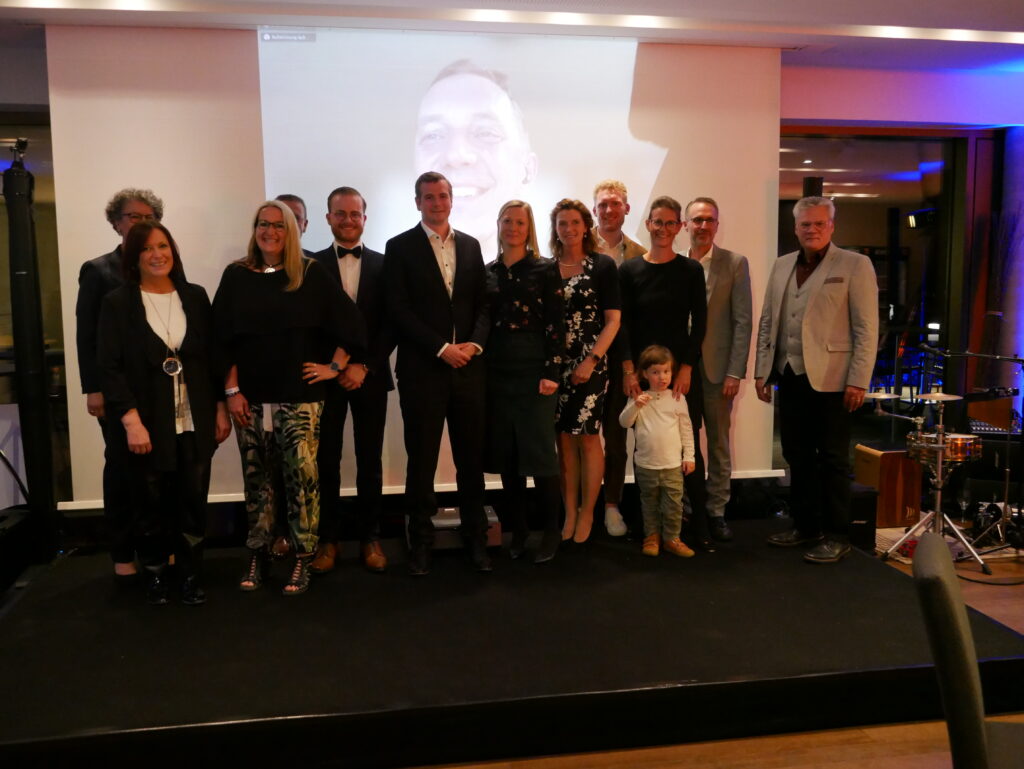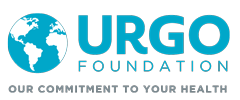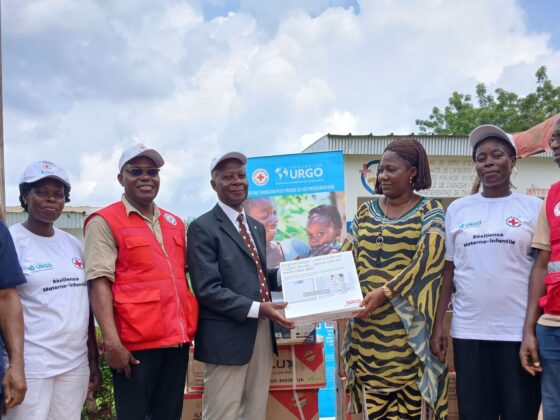Research projects in the field of wound care honoured
Sulzbach/Monheim, 06 May 2022. In the run-up to the DEWU German Wound Congress & Bremen Nursing Congress 2022, the non-profit Foundation URGO has awarded the Three Countries Wound Prize 2022 worth a total of €20,000. With this award, the URGO Foundation honours innovative and outstanding scientific work and research projects in the field of wound treatment. This year, five papers convinced the independent, international jury of experts from various medical fields and nursing.
The awards were presented on the eve of the DEWU German Wound Congress & Bremen Nursing Congress 2022 at an evening event in Bremen, to which URGO GmbH invited the award winners, the jury and other guests. After being honoured by the laudators, the prize winners were able to receive their prizes personally from the Managing Director of URGO GmbH, Sascha Glanemann.

Three Countries Wound Prize 2022 – these are the prize winners
A special prize was awarded to the work of PD Dr. med. Maximilian Kückelhaus, Fachklinik Hornheide, on the topic of “Long-term success of the world’s first life-saving replacement of a human skin using gene-modified stem cells”. The work describes the long-term course of an experimental therapy in which a child with the disease epidermolysis bullosa, also known as butterfly disease, which is considered incurable, had gene-modified skin cells transplanted onto extensively damaged skin areas for the first time worldwide in 2015. The results of the study, which were even published in the renowned journal The New England Journal of Medicine, were able to prove the long-term treatment success of the experimental therapy. The positive and promising results of the study give rise to the justified hope of being able to provide children with butterfly disease with an effective treatment option in the future.
The paper “Predilection sites in pyoderma gangraenosum: Retrospective study with 170 clearly diagnosed patients” by Dr. med. Maurice Moelleken, University Hospital Essen, dealt with pyoderma gangraenosum, a serious dermatological clinical picture. In a retrospective study with 170 clearly diagnosed patients, Dr. Moelleken investigated at which sites pyoderma gangraenosum occurs preferentially and was able to show that the rather rare but painful disease occurs at all body locations, especially when all other differential diagnoses were excluded at the lower legs. The findings from the analysis can help to ensure that affected patients are diagnosed as early as possible and treated with an immune system.
The influence of information brochures on patient education, for example, on patient satisfaction, adherence to therapy or personal responsibility was investigated by Dr. phil. Marina Otten and Kerstin Protz, University Medical Centre Hamburg-Eppendorf, in their work “Education in people with venous leg ulcers based on a brochure about compression therapy: A quasi-randomised controlled trial”. Her study suggests that patients with venous leg ulcers who are informed about their condition and the measures and goals of the associated compression therapy by means of a brochure benefit from such a brochure, as better knowledge and understanding can strengthen their self-determination and adherence to therapy.
Dr. med. Finja Reinboldt-Jockenhöfer, University Hospital Essen, focused her work on the topic “Connection of different aspects of quality of life in patients with different wound entities: results of a multicentre cross-sectional study” on the role of health-related and wound-related quality of life of patients with chronic wounds. The results of the study show that wound-related quality of life has clinically relevant differences between patients with chronic wounds of different etiologies and that health-related quality of life is related to age and gender, which should be taken into account in the management of these patient groups. The health-related quality of life should therefore be regularly objectified in all patients with chronic wounds using a validated measuring instrument.
Moritz Ronicke, University Hospital Erlangen, investigated in his paper “Pyoderma gangraenosum and venous leg ulcer – histological comparison of the immune infiltrate using multi-antigen analysis” how pyoderma gangraenosum, a disease that has no clear histopathological features, can be distinguished from other ulcerative diseases such as venous leg ulcer. The aim of the study was therefore to determine histopathological features of pyoderma gangraenosum in a direct comparison with venous leg ulcers. Histopathological differences were found that can be used to differentiate between the two diseases and thus represent an important tool for the rapid initiation of appropriate therapy.
As in 2020 an award ceremony wasn’t possible due to Covid. Therefore the winners of 2020 were also present. The award winners of 2020 in alphabetical order and an overview of their work:
- Dr. Johannes G. Matiasek (St. Josef Hospital Vienna) | Title of thesis: “An intra-individual surgical wound comparison shows that octenidine-based hydrogel wound dressing ameliorates scar appearance following abdominoplasty”.
The research group led by Dr. Matiasek investigated wound healing under two different wound dressings after abdominoplasty in an intra-individual comparison over up to 12 months after surgery. The results showed that the various skin parameters measured, wound healing and the development of scar tissue were better under treatment with octenidine-containing hydrogel and standard wound dressings than under a standard wound dressing alone.
- cand. med. Maurice Moelleken (University Hospital Essen) | Title of thesis: “Prospective clinical study on the effectiveness of bacterial removal with mechanical debridement in and around chronic venous ulcers with fluorescence photography”.
In his thesis, Mr Moelleken investigated the possibility of using fluorescence photography to demonstrate the effect of mechanical debridement on the reduction of germs in the wound and the wound environment. Fluorescence photography turned out to be a very effective tool and clearly showed that mechanical debridement drastically reduced bacterial colonisation in the wound environment and especially in the wound, even without antiseptic treatment.
- Prof. Dr. med. Ewa Klara Stürmer (University Medical Centre Hamburg-Eppendorf) | Title of the paper: “Do antihypertensives and oral antidiabetics have a (negative) influence on wound healing?”
Prof. Stürmer investigated the question of the extent to which antihypertensives and oral antidiabetics frequently used in people with chronic wounds have a negative influence on wound healing. An extensive literature search showed that very little data has been published on this to date. In the 2D and 3D in vitro models she used, a very ambivalent picture emerged in relation to different active substances. Metformin in particular showed a negative influence on wound healing in the model. Therefore, it should be investigated in future to what extent the antihypertensives and oral antidiabetics used may have a negative influence on wound healing.
- A special prize for current relevance was awarded to the work of Dr. med. univ. Markus Duft on the topic of “WUND APP” with the scientific topics “Strategies and concepts in the education of patients and relatives” and “Wound management and quality of life”. Mr. Duft submitted the work on behalf of the association Wound Management Vienna, the WUND APP is supervised by Renate Höfling for the FIEW (Foundation for Innovation and Education in Wound Management). The app, which is free of charge for patients, allows them to keep a simple and clear record of the course of their chronic wounds and to obtain information about the cause and possible therapies at the same time.




